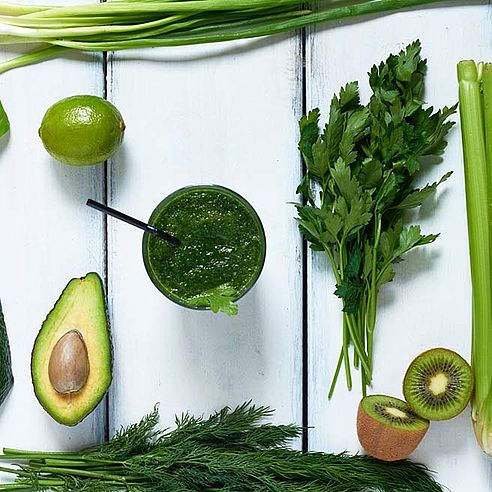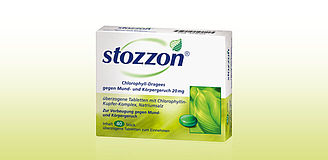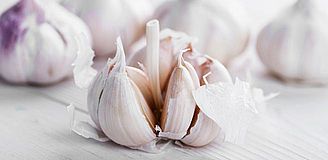
Bad breath – there’s not just one cause
What causes bad breath? Experts estimate that around a quarter of the population of Germany suffer from bad breath, sometimes without even being aware of it themselves. We’re not just talking about garlic or beery breath, we’re talking about foul-smelling breath coming from the mouth and, sometimes, the nose. And the worst thing: Chronic bad breath can really make you feel lonely. But: If the causes for the bad breath are found then, as a general rule, the problem can be solved through better dental care, for example.
You know that: Your colleague / fellow member of the football team is actually nice, but you don’t really want to stand too close to her / him. Reason: Serious bad breath – also known as halitosis.
Normally, countless microorganisms in the oral cavity ensure that the oral flora remains balanced. However, if your perfectly functioning ecological biotope falls out of whack, then the putrefactive bacteria multiply predominantly instead of the other bacteria. They are the cause of the bad breath. But: Do you tell your colleague or fellow player that they have bad breath? Answer: Yes. And you can also give them tips. Find out about the causes for bad breath and remedies for it in this article.
Jobs of the bacteria in the oral cavity
Gastrointestinal illnesses can also cause bad breath but in the vast majority of cases, the cause lies in the pharynx. Experts say that there are around 100 billion bacteria just in the oral cavity alone. They are supposed to ward off dangerous pathogens and protect the human body. At the same, the invisible housemates support the digestive process in the mouth and pharynx.
Here, the mouth functions as the gateway to the digestive tract, because while the food is still being chewed up, the many microorganisms in the saliva begin digesting the food. They prefer to break down food with a high protein content, i.e. dairy products, eggs and fish. More often than not, the causes of bad breath lie here in the mouth rather than in the stomach.
Bad oral hygiene leads to bad breath
The more protein that remains in the mouth, the more at home the bacteria feel. In other words: Food residue in interdental spaces or gingival pockets is the perfect target for putrefactive bacteria. If you add poorly cleaned teeth and other causes of bad breath, such as excessive alcohol, cigarettes and caffeine, into the mix then is it guaranteed that unpleasant smelling breath will be the result.

Healthy eating and dental care: The foundations of fighting against bad breath
Rinsing your mouth with mouthwash is only a quick solution – it does take care of the putrefactive bacteria, but it also gets rid of the “good” bacteria which should actually prevent bad breath from developing.
Chewing gum is an equally short-term solution. Its flavour covers up the bad breath but doesn’t eliminate the causes. Furthermore, chewing gum contains sugar or sweeteners which is why it is healthier to chew plants containing chlorophyll, like parsley. Stozzon Chlorophyll Dragees are particularly practical and effective.
People who are healthy, who eat a balanced diet and drink enough, are already building important foundations to ensure that they have an efficient and balanced oral flora. Then the teeth are next. Of course the correct dental care is important. Teeth should have been thoroughly checked by a dentist and repaired and professionally cleaned, if necessary. Bleeding gums, a rotten tooth and ill-fitting or dirty dentures are all guarantees for bad breath.
It’s best to stick to the motto “Prevention is better than the cure”: You should take care to ensure that you perform proper dental care and that you clean your teeth (and tongue) regularly, twice a day is best. It’s just as important that the interdental spaces stay clean. A soft toothbrush and floss are also essential tools in the fight against the causes of bad breath.
In addition, there are also foods, such as onions and garlic, whose smell-related problems have been widely known for a long time. We will give you some tips for that later on.
The tongue: The preferred abode of putrefactive bacteria
The tongue is an ideal place for putrefactive bacteria to live because of its rough surface. They create a coating on the tongue as a form of self-protection and can work, undisturbed, on developing bad breath. So, it’s also important to regularly act against the tongue coating with a tongue cleaner.
You can find more tips and information about bad odours on our advice pages about dental diseases and proper oral hygiene, you can also use these pages to find more information about the other causes of bad breath. Also, check to see whether the cause of the bad breath comes from inside; from heartburn, problems with the oesophagus or even a gastric ulcer.
With our information about the causes of bad breath and tips on how to combat it, you might soon be able to get along with your colleagues or your football mates better.








